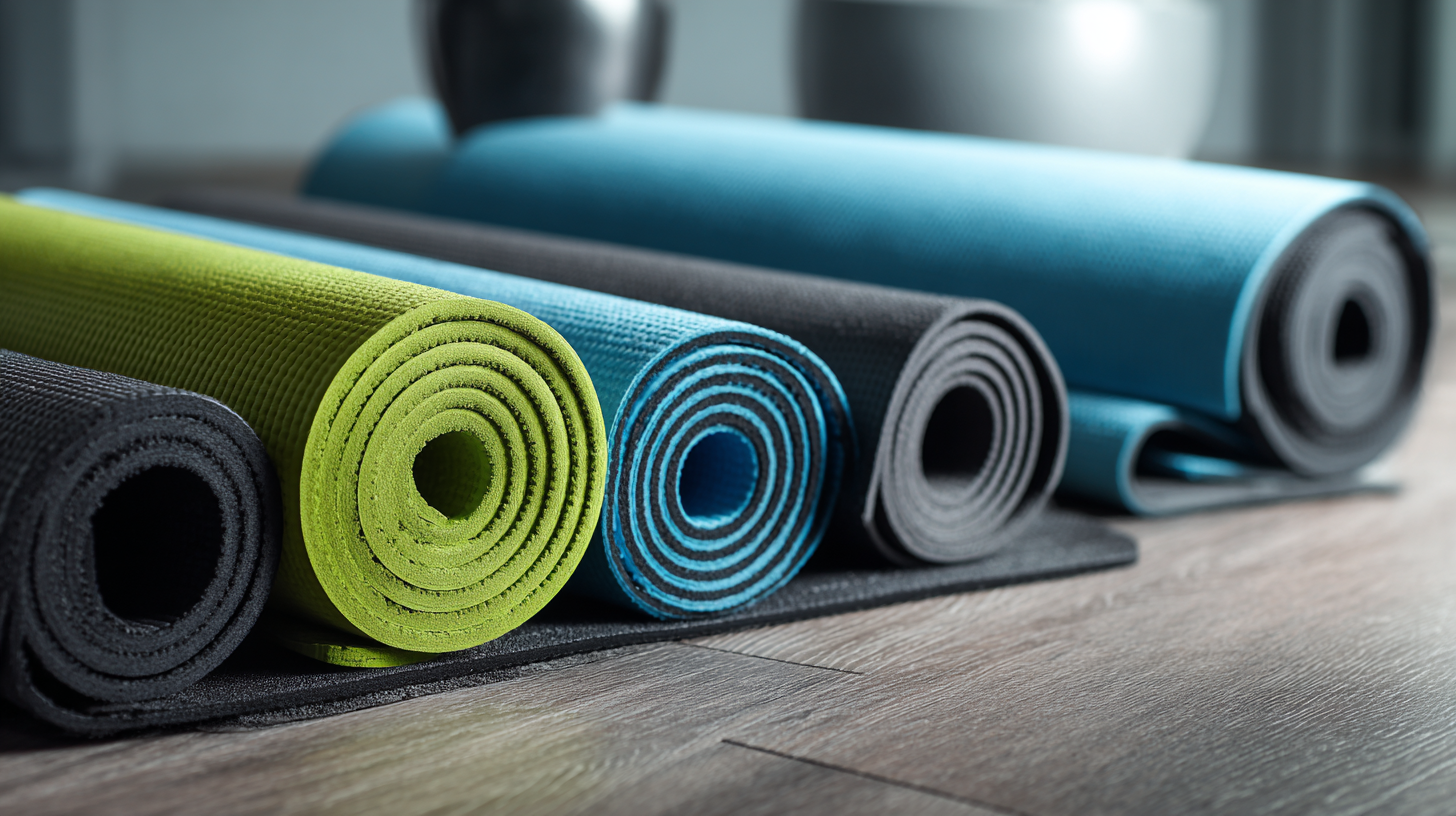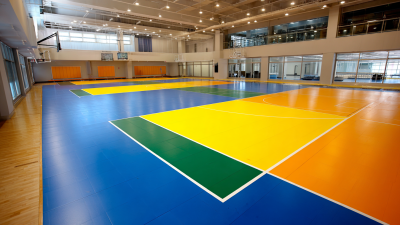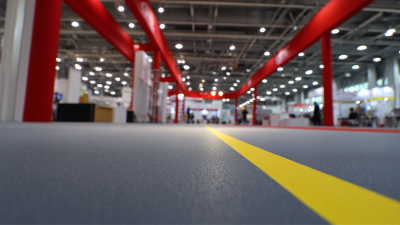
-
Home
-
About Us
-
Products
-
Solution
-
Accessories Service
-
Technicial Service
-
Additional Service
-
News
-
Blog
-
Contact Us
Leave Your Message

When it comes to setting up a home gym, one of the most crucial components to consider is the flooring, particularly the choice of Rubber Gym Mats. According to a report from IBISWorld, the fitness equipment industry is projected to grow significantly, emphasizing the rising importance of quality home workout setups, driven largely by the increase in remote work and a growing emphasis on health and wellness. In fact, a recent survey indicated that nearly 60% of individuals engaged in home workouts reported the need for better flooring solutions to enhance their exercise experience.
 Rubber Gym Mats not only provide superior traction and cushioning but also protect floors and reduce noise, making them an ideal choice for home fitness enthusiasts. As you embark on your journey to select the perfect mats, understanding the various options available can significantly enhance your workout environment and performance.
Rubber Gym Mats not only provide superior traction and cushioning but also protect floors and reduce noise, making them an ideal choice for home fitness enthusiasts. As you embark on your journey to select the perfect mats, understanding the various options available can significantly enhance your workout environment and performance.
Rubber gym mats offer a multitude of benefits for home workouts, making them an essential addition to any fitness space. One of the most significant advantages is their outstanding durability. Rubber mats are designed to withstand heavy foot traffic, weightlifting equipment, and intense workout sessions without losing their structural integrity. This durability ensures that your flooring remains protected from scratches and dents, allowing you to focus on your exercise routine without worrying about damage to your home.
Another key benefit of using rubber gym mats is their superior shock absorption. These mats effectively reduce the impact on your joints, which is crucial during high-impact workouts like jumping or running. By providing a cushioned surface, rubber mats help prevent injuries and make workouts more comfortable. Furthermore, they offer excellent traction, reducing the risk of slipping during exercises. This combination of safety and comfort makes rubber gym mats an ideal choice for creating a functional and enjoyable workout environment in your home.
When selecting rubber gym mats for home workouts, it’s essential to consider several key features that can enhance your exercise experience. Firstly, thickness is a critical factor. According to industry studies, thicker mats—ranging from 0.5 to 1 inch—provide better shock absorption and support, which is particularly beneficial for high-impact exercises such as weightlifting or plyometrics. A 2022 report by the International Fitness Association highlights that users of thicker mats reported a 30% decrease in joint discomfort during workouts, making them ideal for prolonged training sessions.
Another important feature to consider is the mat's surface texture. Smooth surfaces may be easy to clean but can be slippery, whereas textured mats offer better grip and stability—a necessary trait for safety during dynamic movements. A survey by the American Council on Exercise (ACE) indicated that 75% of fitness enthusiasts experienced fewer slips and falls when using mats with a textured finish. Additionally, durability and ease of maintenance should also guide your decision. High-quality rubber mats can withstand intense workouts and are typically resistant to wear, making them a long-term investment for your home gym.
This chart illustrates the key features to consider when selecting rubber gym mats for home workouts, comparing their importance based on user feedback.
 When it comes to selecting rubber gym mats for home workouts, it's essential to understand the various types available and their specific uses. The most common types of rubber gym mats include interlocking tiles, rolled mats, and puzzle mats.
Interlocking tiles are designed for easy installation and can be customized to fit any space. These mats are typically thicker, providing excellent cushioning for high-impact exercises like jumping and weightlifting. They are also versatile, making them suitable for multi-purpose fitness areas.
When it comes to selecting rubber gym mats for home workouts, it's essential to understand the various types available and their specific uses. The most common types of rubber gym mats include interlocking tiles, rolled mats, and puzzle mats.
Interlocking tiles are designed for easy installation and can be customized to fit any space. These mats are typically thicker, providing excellent cushioning for high-impact exercises like jumping and weightlifting. They are also versatile, making them suitable for multi-purpose fitness areas.
Rolled mats, on the other hand, offer a seamless surface, which is ideal for yoga, Pilates, and other floor exercises. The absence of seams minimizes the risk of tripping, providing a safe workout environment. Additionally, they are available in various thickness levels to accommodate different workout styles. Lastly, puzzle mats are a great choice for those who need portability and easy storage. They can be assembled and disassembled quickly, making them perfect for temporary setups or small living spaces. Each of these mat types serves unique needs, ensuring that you can find the right fit for your home gym experience.
When it comes to selecting the right rubber gym mats for your home workouts, measuring your space accurately is essential to ensure a perfect fit. According to a report from the World Health Organization, regular physical activity is crucial for maintaining health and reducing the risk of disease. However, creating an inviting and functional workout space can significantly enhance your motivation and the effectiveness of your exercise routine.

To begin measuring, start by determining the dimensions of the area where you plan to place the mats. Measure both the length and width in feet, accounting for any equipment or furniture that may impact the available space. For optimal comfort and safety, industry standards suggest providing at least 4-6 feet of space around your workout area. This allows for a full range of motion during exercises and prevents accidents caused by equipment or sudden movements. Additionally, according to a study by the American Council on Exercise, an organized workout environment can lead to a 30% increase in workout adherence, emphasizing the importance of carefully planning your mat layout.
Once you have your measurements, consider how many mats you will need based on their size and the intended activities. Mats typically come in a variety of thicknesses and dimensions, with thicker options providing more cushioning for high-impact exercises. The International Journal of Exercise Science suggests that utilizing mats that are at least 1/2 inch thick can significantly reduce the risk of injury, particularly for exercises involving jumping or intense movements. By taking the time to measure and choose wisely, you can create a safer and more efficient workout environment tailored to your personal needs.
To ensure your rubber gym mats remain in top condition, regular maintenance is essential. Start by cleaning them regularly to prevent the buildup of dirt, sweat, and odors. A simple mixture of warm water and mild detergent can effectively remove grime. Use a soft mop or cloth to avoid damaging the mat's surface. Rinse thoroughly with clean water and allow the mats to dry completely before putting them back in use.
In addition to routine cleaning, it is beneficial to inspect your mats periodically for any signs of wear and tear. Look out for cracks or damage that could affect their performance and safety during workouts. If you notice any significant issues, consider repairing or replacing the affected mats to maintain a safe exercise environment. Lastly, placing mats in a well-ventilated area can help prevent moisture buildup, which can lead to mold or mildew. Proper care will prolong the lifespan of your rubber gym mats, ensuring they continue to support your fitness journey effectively.
| Feature | Description | Maintenance Tips |
|---|---|---|
| Material Quality | High-density rubber is durable and provides great shock absorption. | Regularly check for tears or wear, and replace if necessary. |
| Thickness | Thicker mats provide more comfort and support for high-impact exercises. | Keep mats clean and dry to prevent mold and preserve thickness. |
| Surface Texture | Textured surfaces enhance grip and prevent slipping during workouts. | Wipe down after each use to remove sweat and dirt from texture. |
| Size | Choose size based on available space and workout type. | Store mats rolled or flat to maintain shape and avoid creases. |
| Portability | Lightweight mats are easy to move and store. | Keep mats in a dry place to prevent damage during storage. |





